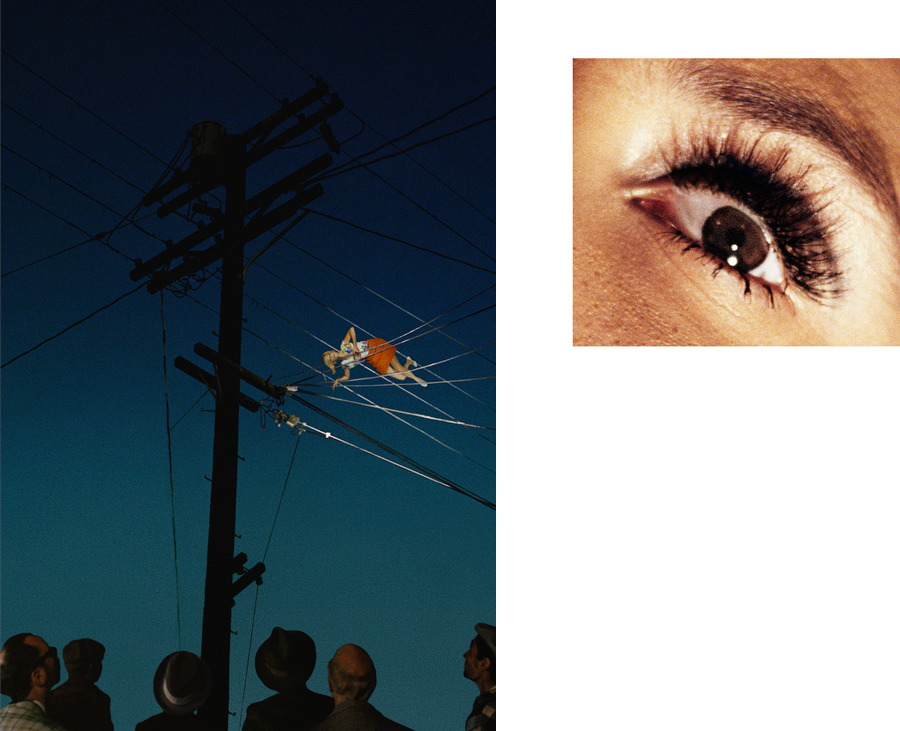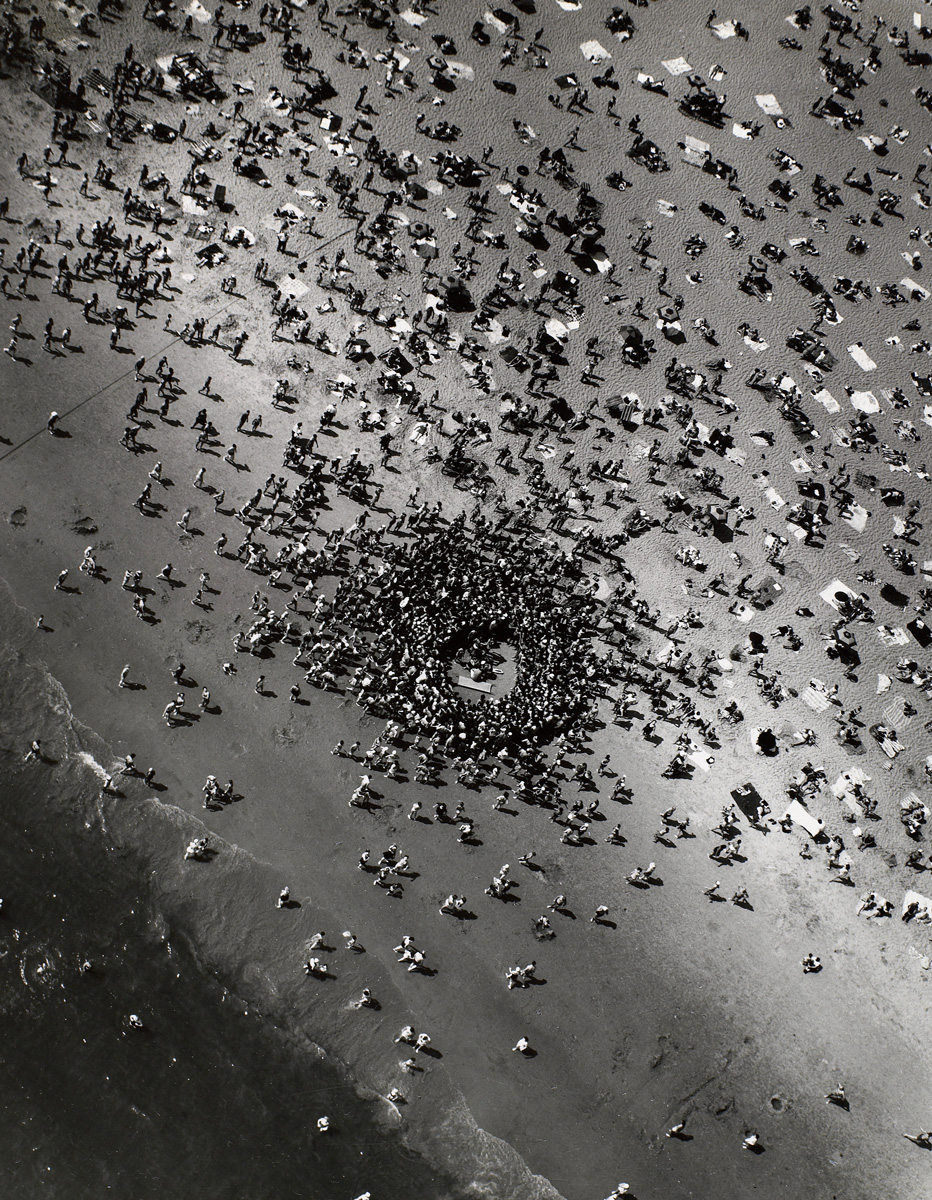by Maggie Finch
6
Artificial collective memories

121.9 x 82.8 cm; 50.8 x 58.4 cm
Collection of Cathy and Jonathan Miller, New York
The simmering anxiety which Prager cultivates in her photographic compositions comes to a dramatic climax in the Compulsion series of 2012. In this suite of diptychs, each set of images presents a scene inspired by sensationalised media reports of accidents and tragedies – a woman clinging to the front of a car teetering over a precipice; a twisted female body suspended from power lines – alongside a detail of a human eye. Each eye is shot at close range, often exaggerating bloodshot veins or clumped mascara, and is shown to be expressing a strong emotion. The works' titles recall those of police reports, each referencing a time and geographical location. When paired together, the images force a play of gazes as we look at the scene and observe the observers.

121.9 x 50.0 cm; 50.8 x 58.4 cm
Collection of Cathy and Jonathan Miller
In addition to cinematic references, Prager's works also form a curious relationship to the histories of street photography and photojournalism in their reportage-style documentation of 'public' events. The spectacle of the scenes and the voyeuristic vantage points that Prager adopts call to mind the mid-twentieth-century snapshots of American freelance press photographer Weegee, who became notorious for hunting down crime scenes – often arriving before the police – and creating sensational images of the actions and crowds gathered there to view the gruesome sights.11 Similarly evocative is documentary photographer Margaret Bourke-White's Beach accident, Coney Island, 1952 (National Gallery of Victoria, Melbourne), a scene captured from an aerial perspective, allowing for an extraordinary view of crowds clustering in a ring around the site of the accident.

American 1904–1970
Beach accident, Coney Island 1952
National Gallery of Victoria, Melbourne
Purchased, 1973
© 2014 Estate of Margaret Bourke-White/VAGA, New York. Licensed by VISCOPY, Sydney
In so far as Prager exerts total control over her images, her works differ dramatically from both Weegee's and Bourke-White's; however, there are similarities in the way the three artists successfully compel the viewer to look at their images. The result of these layered references is the creation of a sense of familiarity and déjà vu which taps into an artificial collective memory. As Priscilla Frank has written, in the Compulsion series Prager captures 'imaginary emotions to captivate the viewer's real ones. The anonymous protagonists sometimes echo Weegee's crime shot victims, implicating the viewer in the shot as a hungry spectator'.12
